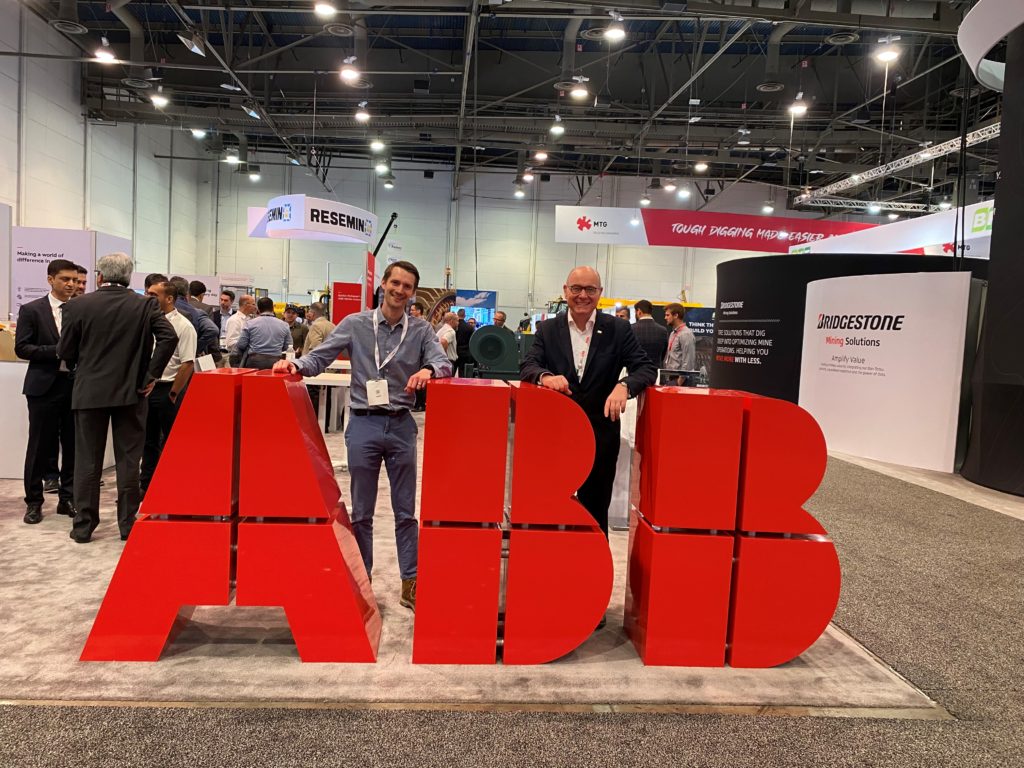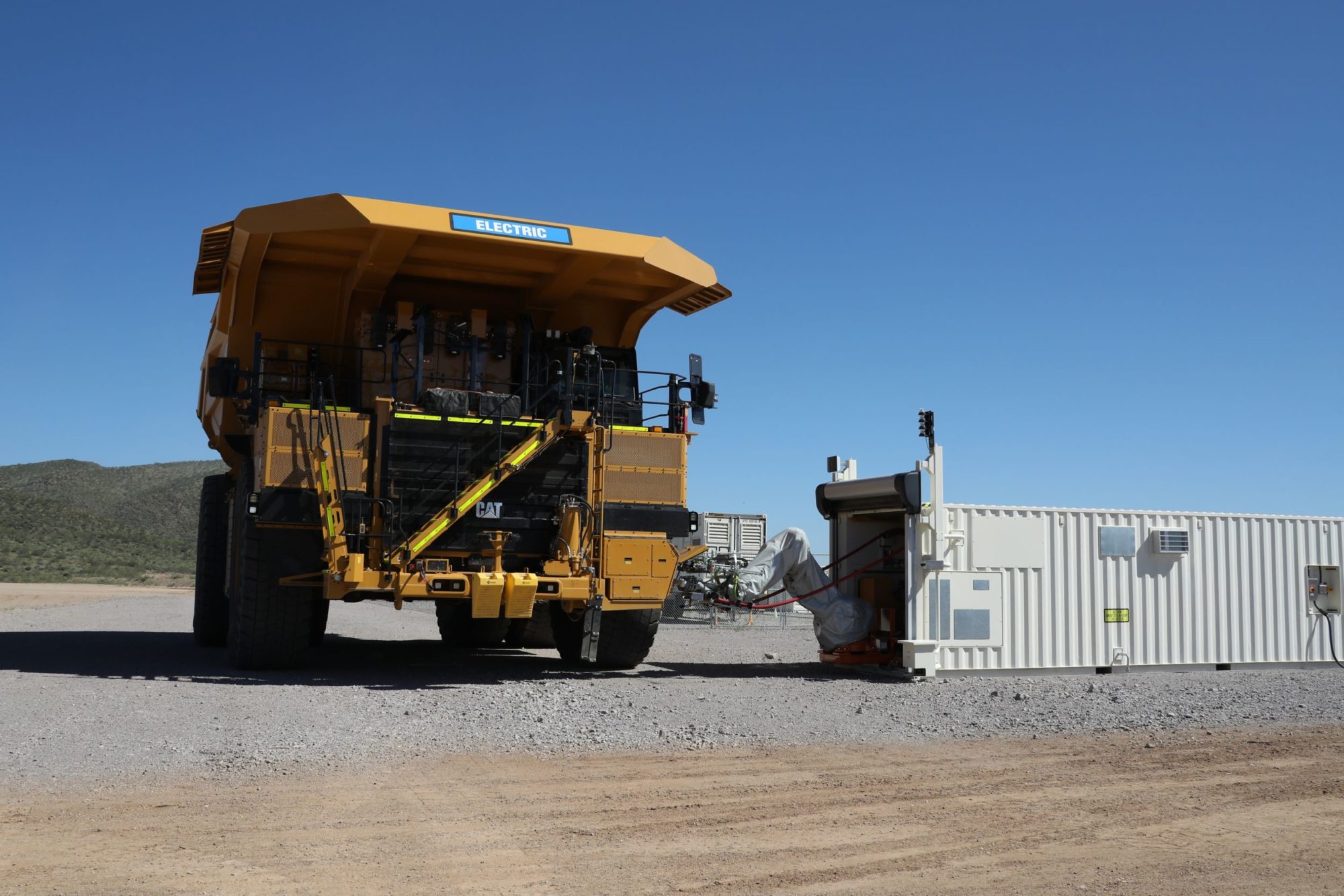Running through the three halls at MINExpo 2024 in Las Vegas last month, the electrification theme was everywhere – numerous booths pulled in attendees with battery symbolism or, in some cases, actual electric machines; others presented new concepts, with variations of dynamic trolley being a particular talking point.
While it is clear there is a wider ‘electric’ offering coming to the market, it is also becoming apparent that the discussion must move on from individual electric machine capabilities to the wider infrastructure at hand and how to manage a site’s available energy constraints.
For IM this was crystallised during several meetings around the show, with the two notable examples coming from a discussion with Joachim Braun, Division President at ABB Process Industries, and a presentation from Brian Weller, Vice President of Electrification for Caterpillar.
Real eMine progress
“It is hard to imagine any company being able to sell an electric vehicle without an awareness of how this vehicle will affect a site’s energy balance,” Braun told IM on the final day of the three-day show in Las Vegas. “Part of the equation now is the power management system piece. No operation is going to tolerate a major drop in productivity with the introduction of these new vehicles and increased renewable energy generation.”
ABB has been aware of this for some time, using the backdrop of MINExpo 2021 to launch its eMine™ portfolio of fully integrated electrification and automation systems, covering mine to port.

The company is in the somewhat unique position of serving both OEMs and mine sites with this offering, with the most recent publicised agreements struck with the likes of Komatsu and Hitachi Construction Machinery in the former category, and Codelco and Antofagasta in the latter.
On the availability of renewable energy generation, Braun acknowledged the potential to carry out “power-hungry activities” during the day when solar irradiation might be highest in, say, Australia or Latin America, as one option to consider.
He also expected the introduction of new levels of autonomy and artificial intelligence to play key roles in making decisions on site based on planned activities and the energy required to carry those activities out.
“Whatever happens, there has to be an interaction with the fleet management side of things,” he added.
Stitching it together
Caterpillar is one of those companies looking to sell electric machines, as well as chargers, energy storage systems and other supporting electrical infrastructure, to the mining sector. As Weller made clear during a pre-MINExpo 2024 tour of the company’s Tucson Proving Ground and Tinaja Hills Demonstration and Learning Centre in Arizona, the OEM is working closely with key customers to explore the complexities of managing the power needed to keep electric sites running optimally.
“When we think about the energy balance here, it is not just about consuming energy; it is about where am I getting the energy, and how much and when I am getting this energy,” Weller said during a demonstration of the company’s electric site simulation and modelling capabilities.
This Caterpillar demonstration included a simulated customer site that had 26 battery-electric trucks being charged by six 4-MW stationary charging systems and eight 8-MW Dynamic Energy Transfer (DET) points.
Caterpillar wasn’t the only one showcasing such solutions at MINExpo, with Fortescue highlighting a 6 MW charger and Liebherr Power Rail also being featured. During IM’s conversation with Braun, a high power eMine FastCharge under development was mentioned, as was “more flexible solutions on trolley systems”.
All these new solutions – in addition to some of the existing ones on offer – are high consumers of power.
This was displayed in the simulation Weller played on screen in Arizona, where the site energy transfer capacity related to just the haulage fleet came in at 88 MW.
The energy transfer shown over a 4.5-hour period in this simulation swung from 70 MW capacity at the top end and 5 MW at the low end.
“That 65 MW swing is the equivalent of having a city of 40,000 people turn their light switches on and off,” Weller said for context. “That is the magnitude of the variation the site has to absorb.”
This is where the integration of electrification and autonomy are going to prove vitally important, according to Weller, and is where the “assignment engine” the company is developing, in tandem with its advanced simulation capabilities, is expected to come into the Cat® MineStar™ Fleet management system fold.
“When we look into the mine site of the future, and the idea of electrification and autonomy, it has to all be stitched together,” Weller said.
“We can’t have trucks stop because of a dead battery; we can’t have trucks back up on a haul route waiting for a charger. In some instances, you might be better off coming in for a charge right now – regardless of your state of charge – as in 10 minutes you might have 10 trucks lining up waiting to be charged. How do you know that? You have to tie it to the fleet management system. This enables you to know how much energy you need and how much energy you have to complete your next assignment.”
These tradeoffs will likely impact production, but having a system like the assignment engine Weller highlighted allows the site “to make that decision very dynamically”, he added.
Industry consensus
There were others talking up such integration around MINExpo 2024.
Oliver Weiss, Liebherr Mining Equipment SAS’ Executive Vice President, R&D, Engineering and Production, says control and command of zero emission mining technologies are included in the autonomous haulage system (AHS) the company has been working on with Fortescue.
“The fleet management assignment engine at the core of the AHS monitors fleet energy levels so that jobs and energy replenishment tasks can be assigned efficiently within zero emission fleets equipped with this system,” he said.
Komatsu’s new Modular ecosystem, which builds on the DISPATCH fleet management system, also has an expanding set of interconnected platforms and products built in. Included within this is a new app called “Replenish” to refuel and recharge mining equipment while minimising impacts to production.
Considering ABB and Komatsu recently signed a strategic collaboration agreement to, they said, “jointly develop and bring to market integrated solutions that will help move net-zero emissions for heavy industrial machinery a step closer to reality,” one would expect ABB’s expertise and technologies for automation and electrification to integrate into this new open platform from Komatsu.
It is becoming clear that the energy management paradigm will require mine sites of the future to have even more integrated workflows underlined by higher levels of autonomy.
And it is this understanding that will lead to an accelerated uptake of electric solutions from where the industry is today.











